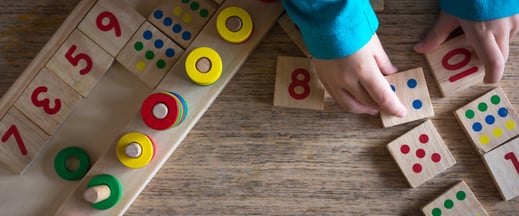
We’re continuing our celebration of NAEYC’s Week of the Young Child with Work Together Wednesday.
Early childhood friends, I have a confession: I am a math person.
I know, I know. Math gets a bad rap. We all know it’s important, but it’s not usually love for proofs and calculus that land people in the preschool classroom. One minute, you’re asking children how many students are at school today; the next, you’re having anxious flashbacks to high school algebra.
However...what if I told you that math is actually really fun? And creative? And exploratory?
When teaching math to young children, it’s easy to get hung up on the standards, terminology, and mechanics. But math in the early childhood classroom is much more about laying the foundation for the critical thinking skills used later. You’re developing children’s frameworks for understanding. You’re encouraging their lateral thinking skills. When you’re in the art area, you’re helping children understand that the images they create are made up of shapes. When you ask children to help set the table for snacks, you’re helping them learn to solve problems with mathematical tools like one-to-one correspondence. When you’re in the block center, you’re encouraging children to predict what will happen to structures, finding patterns, and strengthening spatial reasoning.
That’s why I’m excited about Work Together Wednesday, which shows us that “when children build together they explore math and science concepts and develop their social and early literacy skills.” That’s right - math concepts are related to all of these domains of learning and understanding!
So, how do you pick the right questions to further children’s understanding? I like to take my inspiration directly from educators and from children themselves! There are tons of great examples of teachers and children building together in the CLASS Video Library and Learning Resources. Here are some thought-provoking questions they ask, and a few of my own:
- What else do we need for our [airport, garage, tower]?
- Have you seen something like this before?
- How do you think we could represent it in our structure?
- How can we get it to fit?
- What’s your idea?
- Do you think these would help? Why or why not?
- If we designed this with a pattern in mind, what would come next?
- Are these the same size? Why should they match or be different?
- What made you choose this method?
- Were you successful? What helped you accomplish your goal?
As teachers or family members, we can do so much to help children develop their early math skills in ways that are genuinely fun! Share with us and join in the conversation about what you and your young child are building together with this year’s event hashtag: #WOYC21.
